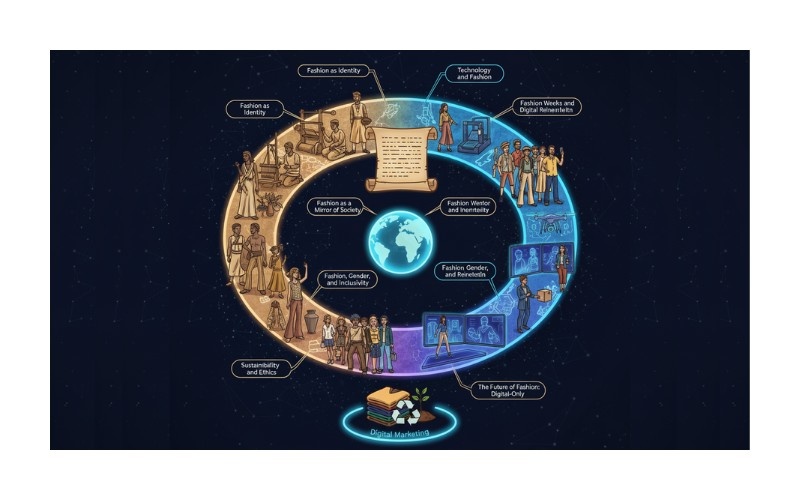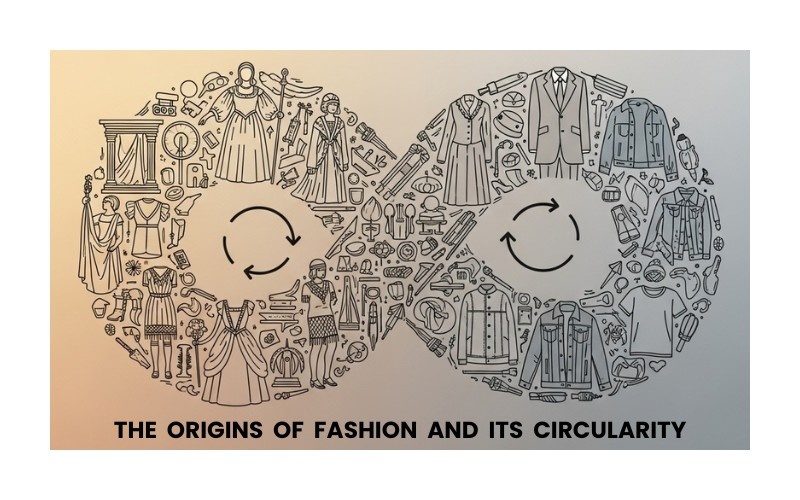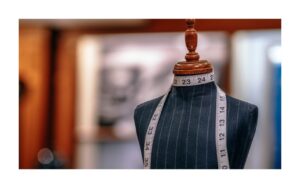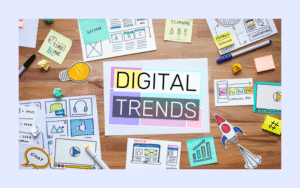Fashion is circular. This is one of the most oft-repeated facts in the business, and it bears itself out every year. What was ancient becomes instantly hip with a new interpretation. Bell-bottoms of the 70s returned to fashion in the 2000s and yet again in the later part of the 2010s. Corsets that were once such symbols of constraint now represent empowerment in the hands of stylists and designers who reinterpret them for contemporary styles. Even minimalism in the 90s finds its revival in the current fixation with “quiet luxury,” where subtlety and simplicity are acclaimed.
Why is fashion circular, then? The reason is found in psychology, culture, and commerce. Humans are attracted to nostalgia, to the familiarity of the known. Meanwhile, younger people discover trends they never had the first time around because they are given new meaning.
Fashion as Identity
The garments we wear are social cues. They indicate to the world who we are, what we care about, and sometimes even who we dream of being. Fashion is identity in motion. Consider the goth culture, the punk scene, hip-hop culture, or the streetwear resurgence. Each of these was not about clothing but about values, music, politics, and rebellion.
In the current scenario, where self-expression is taken to new heights, fashion has only grown more individual. The social democratization of style on social media means that anyone can be a trendsetter. Digital marketing is the key here. Influencers, micro-influencers, and regular producers now possess the tools to engage with crowds that previously were only accessible to fashion magazines. A brief video about a morning look can lead thousands of individuals to adopt the same looks, turning personal identity into a common cultural endeavor.
Technology and Fashion
The discussion regarding fashion in the modern era is not complete without understanding the involvement of technology. From online fashion weeks during the pandemic to AI-driven designs, the scenario is changing rapidly. 3D printing has introduced possibilities of future clothes that redefine the very notion of apparel. Virtual fitting rooms enable customers to virtually try on clothes before buying. Fashion brands are even going into the metaverse, selling only digital clothing for avatars, demonstrating that fashion is not about the physical world.
Technology has also transformed supply chains and sustainability. Data analysis foresees demand, eliminating excess and waste from overproduction. Wearable technology embeds functionality into clothing, enabling clothes not just to be stylish but also intelligent. These innovations are not merely about convenience but about redesigning what fashion can be in the 21st century.
And behind each tech revolution in fashion is digital marketing as the narrative power. It is that which brings these innovations to customers, makes them understandable in their context, and creates anticipation around them. Whether it is an intelligent jacket that controls body heat or a couture dress designed using AI, the manner in which these products are marketed decides how well they strike a chord among the masses.
Fashion as Economy
The global fashion business is a trillion-dollar economy with millions of people employed across the world. It is a retail, exports, and tourism driver. Fashion weeks in places such as Paris, Milan, and New York are not merely about the display of creativity but about creating business, capturing investments, and shaping markets.
Successful fashion brands are those that can tell their stories well. Chanel’s stories are ones of timelessness and elegance. Nike’s stories are ones of empowerment and grit. Streetwear brands‘ stories are ones of rebellion, individuality, and cultural pride. These stories get magnified and propagate all over the world via digital marketing, which is the connector between the designer’s imagination and the consumer’s imagination.
Along the way, digital marketing will keep transforming the way fashion is promoted, honored, and bought. It will empower upstart designers, make sustainability more important, and democratize influence. It will be seen that fashion continues to be an industry as well as a global discussion—something that everyone owns.
Fashion as a Mirror of Society
Fashion has always reflected the societies it is a part of. During times of wealth, we tend to have bright, flamboyant fashions. Consider the roaring twenties, complete with flapper dresses, sequins, and feathers — a celebration of freedom after the Great War. Compare that to the forties during World War II, where fabric rationing made functionality chic and women took on trousers and utilitarian clothing in a way that forever altered gender roles.
This trend continues to this day. 2010s fashion was led by minimalism and athleisure, a sign of both the growth of wellness culture and an economy that is driven by technology titans. Post-2020, there was a boom in loungewear and casual apparel — fashion evolving in line with a society kept indoors. These trends do not happen by chance. They show us precisely where society is at, what it cares about, and what it is responding to.

Fast Fashion and the Ethics of Choice
We could not discuss contemporary fashion without mentioning fast fashion. Companies that produce hundreds of styles per week have made fashion more available at record levels. For a few dollars, a teenager can reproduce a style inspired by the runway. Fashion is more democratic in terms of access, but its price for the environment and workforce cannot be denied.
Fast fashion has provided shoppers with a steady stream of novelty, but it has also bred disposability. An article of clothing is used once for a social media selfie and discarded. The question is, are we embracing fashion as art and expression, or commodifying it as disposable content? Perhaps the solution lies in how consciousness expands and how future generations of consumers insist on more.
Here too, digital marketing plays both sides of the coin. On the one hand, pushy ads and influencer hauls promote overconsumption. On the other hand, strong campaigns create awareness of the ruinous effects of fast fashion, promoting responsible shopping, thrifting, and reusing. The same instruments that fuel excess can be turned around to instill responsible change.
Fashion Weeks and Digital Reinvention
Paris, Milan, London, and New York fashion weeks have long been the style temples of exclusivity. But in the past few years, their elite status has been tested. Live streams, virtual presentations, and digital-first shows have made these previously insider affairs mass spectacles for all to see with an internet connection.
The importance of this transition cannot be emphasized enough. It is no longer about exclusivity but about storytelling in scale. It is no longer about thinking about clothing but about thinking about content. The catwalk is no longer the sole platform; the internet is. And once again, digital marketing takes the role of the amplifier that transforms the spectacle into cultural memory.
Fashion, Gender, and Inclusivity
Fashion is also leading the discussions on gender and inclusivity. Over the past few years, we have experienced the crumbling of strict gender divisions in apparel. Men walk around in skirts, women show off roomy tailoring, and androgyny is given its due on runways as well as streets. This is not a trend; it’s a revolution to authenticity, where one can express themselves beyond the confines of what traditionally was acceptable.
Inclusivity has also redefined beauty standards. Plus-size models, differently-abled models, mature models, and diverse ethnicities are being featured more and more, although the process is not yet complete. These changes are important because fashion has always been a reflection of what society deems beautiful and deserving of attention. By expanding that horizon, fashion assists in reshaping self-esteem and social acceptance for millions.
Diversity campaigns go viral not merely because of the attire but because of the message. And that virality is achievable because of the extent of digital marketing. Brands that used to provide services for narrow ideals now welcome inclusivity, not merely because it is the right thing to do, but also because it is a business imperative in a world where consumers expect representation.
Fashion and Memory
Clothing contains memory in intensely personal ways. A wedding dress, a uniform, a jacket a parent wore — they’re not only clothing but also repositories of emotion, heritage, and narrative. In that way, fashion is a human archive. People will forget a day’s details, but recall what they wore and how it made them feel.
This emotional resonance gives fashion such potency in advertising and brand building. It’s not the selling of garments; it’s the selling of emotions, self-assurance, and identity. Digital marketing lives and breathes storytelling that resonates at this emotional center. A campaign featuring a father buying his child a jacket or a woman pulling on her grandmother’s sari in a contemporary style is more than just a sales appeal; it is a story that resonates with people.
The Future of Fashion: Digital-Only
Digital-only fashion is perhaps the most interesting new frontier. Why would somebody purchase something they can’t actually wear? Because in an era when online presence equals physical presence, virtual fashion satisfies a new type of identity demand. In gaming, social media, or the metaverse, individuals desire to do it in fashion, even in cyberspace.
Here, digital marketing does a huge job in making the concept legitimate. By partnerships with gaming platforms, influencers, and celebrities, digital fashion is Aspirational. Fashion as a Global Language
At its core, fashion is a wordless language. It has no borders, connecting citizens of the world across geographies and cultures. A sari can be born in India, but it can spawn a gown in Paris. New York-created sneakers can be a classic on Tokyo streets. Fashion provides conversation without interpretation, establishing bridges across the globe.
Conclusion: Fashion as Human Storytelling
Fashion is, and will always be, about more than clothes. It is identity, culture, memory, rebellion, and aspiration sewn into cloth. It captures who we are and, perhaps as importantly, who we hope to be. From the cyclical renewal of style to the popularity of digital-only ensembles, fashion keeps changing with the times but maintains its core: the human desire to express itself.
What makes this era so unique is the role of technology and digital marketing in amplifying fashion’s reach. Never before has the industry been so democratic, so fast, and so global. Whether it’s a viral campaign about sustainability, a digital-only fashion drop, or an inclusive runway, the stories of fashion today travel farther and faster than ever.
As we move forward into the future, fashion will continue to be a force to be reckoned with — not merely determining aesthetics but determining dialogue, values, and relationships. It will continue to inspire, provoke, and console. And as much as fabrics will be altered, platforms will shift, and technology will redefine possibility, the human desire to narrate through fashion will never waver.














